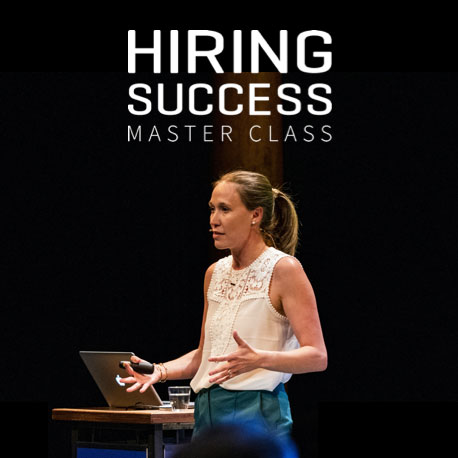Have you struggled to get internal buy in for new talent acquisition (TA) initiatives? Here’s how to make sure you can get the budget and resources you need for your next project.
If you’re in talent acquisition, you’ve most likely faced the challenge of getting budget for new initiatives. Many times, these initiatives take the form of tools like an AI sourcing suite, tech assessment platform, or other type of software that will allow you to more efficiently source and screen talent.
Of course, budget as a roadblock is endemic throughout most functions in every organization. But, it seems like TA has an even higher burden to get the necessary resources given many management team’s outdated view that we are a cost center.
Despite the challenges, recruiters can overcome this hurdle even with the most strict budgeting processes. In fact, there are two main tactics that I’ve seen work time and again to get the budget necessary for new HR software.
Cross functional buying committees
The first tactic I’ve found to work extremely well for HR and TA is the cross functional buying committee. This sounds like jargon an MBA might use, but it’s actually amazingly effective, and aptly named once you get the hang of it.
The basic idea is to get a few leaders from each key function to rally around your cause. As it turns out, there are many people in every organization that are passionate about recruiting. They are keenly aware that recruiting is the engine to future growth, as well as the main mechanism that feeds culture.
To get this kicked off, put the idea out there that you are organizing a small group of leaders to tackle the recruiting challenges in the business. You can communicate this over email, Slack, or at an all hands meeting. Keep in mind that when defining problems, the more specific you can be, the better. Diversity recruiting or employer branding will get more interest than simply “recruiting.”

Here’s an example from my experience. We wanted to build our employer brand to support doubling headcount over the next 12 months for a company of 400 people. We put out the word via Slack and at an all hands meeting that we wanted to do this – and found that leaders from marketing, sales, product and engineering were all interested in helping out.
We were very explicit about what this committee would do – help to formulate a strategy and then be an advisory board during the implementation of the strategy. These leaders knew it’d be a low lift, and that they wouldn’t be required to actually run with execution.
The committee met three to four times in the first six weeks of kicking this initiative off. They were a great sounding board so that we could focus our laundry list of ideas down to a few projects that would have the biggest impact. This is the power of diversity of thought.
More importantly, this committee allowed us to get budget and resources when we needed it. The people who take on extra work to be on this type of committee are the go-getters of the organization. They are respected, and people listen to them. When we went to the CFO for our first budget request, the names of all the people around the table were on it. There was no way we weren’t getting the money (6 figures for a paid media contract to build more top of funnel).
The HR roadshow
The second tactic that I’ve seen work incredibly well to get internal buy in for new HR and recruiting initiatives is what I call the HR Roadshow.
When a company goes public, they put together a presentation that goes through why it’s an amazing company. They present this to potential investors, and then those investors buy stock at the IPO. HR and TA can use the exact same tactic to get what they need to do their jobs better.
Let’s go back to my experience running employer branding. Before we kicked off our months long push to build an employer brand, we put together a deck to educate the executive team on what we were doing. This deck had a few key components:
- What is employer branding (relating it to marketing and how candidates look for jobs)
- Why we needed to do employer branding (low unemployment, our need to grow)
- What other companies were doing
- What we wanted to do
- What the potential outcomes would be (lower recruiting fees, faster time to fill)
- The impact on the business (more engineers and sales people leading to more revenues)

We put this together, and then got 15-30 minutes for 1:1 meetings with the key four senior executives in our company: CEO, CTO, CPO, CMO.
The goal of these meetings was to educate, and get buy in. We wanted everyone to know what we were up to so that we could more easily get budget when we needed it.
It played out wonderfully. For example, we had a PR announcement happening the next day that detailed the number of people we were going to hire in the South over the next five years. We knew this would get a lot of exposure, and that people would probably check out our careers site.
Unfortunately, if you don’t have a resume, it’s impossible to apply to jobs at our company. So, we needed a way to capture passive applicants that didn’t have a resume. We also needed a landing page that talked about our new hiring initiative.
The director of marketing told us it’d take two to three weeks to get our landing page live. But, we needed it live tomorrow. So, we went to the CTO who was totally bought into what we were doing. He dedicated an engineer to us, and we got the landing page live that night.
The next day we had our PR announcement, and got over 700 leads from our landing page of people who didn’t have a resume. That translated into probably 30-40 hires— a six figure savings at a $5k cost/hire.
Final words
Getting internal buy-in is hard. This is true regardless of the function you’re in, and it’s especially tough if your executive team views your function as a cost center. That said, with the proper tactics, you can break through the noise and get the necessary buy-in to secure the time and resources you need to be successful!
Join the discussion!
Have more questions about what you can do to get internal buy-in for new HR tech? Please leave them in the comments section below; I’d be happy to offer advice.

 Enroll in the Master Class & earn 6 SHRM credits
Enroll in the Master Class & earn 6 SHRM credits